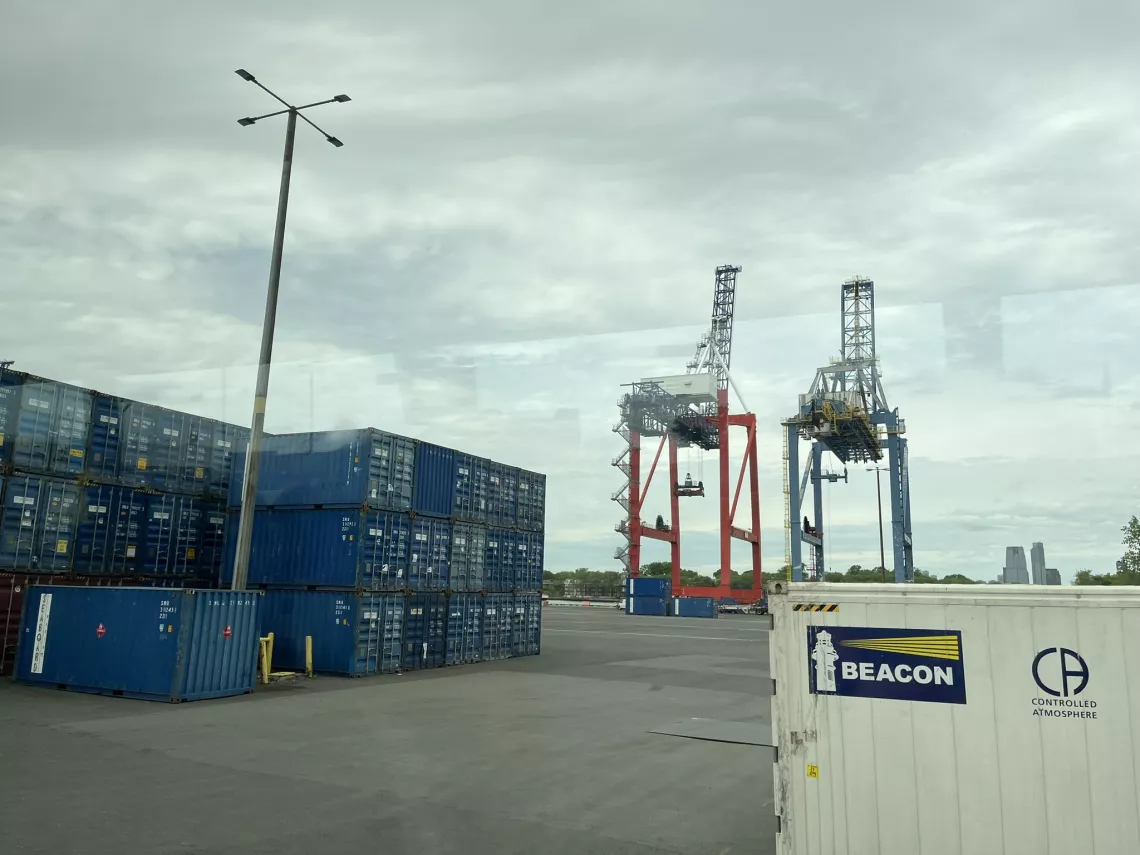This spring, I was invited to tour New York City’s ports with the Environmental Protection Agency (EPA). This tour convened advocates, state and federal agency staff, and industry representatives to see firsthand how ports in New York can benefit from the EPA’s Clean Ports Program.
New York has established ambitious climate commitments through its landmark Climate Leadership and Community Protection Act, reflecting the realities that the climate crisis is already wreaking on the state. Residents are experiencing the crisis at their front doors – whether it be the flooding in New York City, the blizzard in Western New York, record-breaking temperatures, or smoke from Canadian wildfires, all in 2023 alone. Climate change is putting the physical safety of New Yorkers at risk and costing families and businesses millions of dollars in damages.
The way we move people and goods is a major culprit in this. The transportation sector continues to contribute to an outsized share of the state’s climate-disrupting pollution, as well as the country’s. At the same time, this pollution – from boats, long-haul trucks, passenger cars and trucks, buses, and more – is also making us sick. One of the biggest challenges we see in our current system is that low-income communities, in New York and around the country, suffer disproportionately from respiratory problems caused by tailpipe pollution. We must clean up the transportation sector to clean up our air for all communities and to mitigate the most severe impacts of climate change. We must shift from using fossil fuels to move people and goods from point A to point B to using electricity from renewable sources.
Ports serve as gateways for the movement of goods and passengers across the country. They represent a vital part of our economy. Many ports operate with older diesel equipment that emits harmful air pollutants, including cancer-causing substances like benzene and formaldehyde. Exposure to diesel exhaust from working at or living near ports can lead to serious health conditions like asthma, heart disease, and even premature death. This pollution can worsen existing heart and lung diseases, especially in children and the elderly.
It doesn’t have to be this way. In February, the EPA announced its $3 billion Clean Ports Program funded by the Inflation Reduction Act, to address pollution from diesel engines at ports and freight hubs across the country. The Clean Ports Program will fund zero-emission port equipment and infrastructure, as well as climate and air quality planning at ports. This is key because communities that live near ports experience 24/7 pollution from ships, trucks, trains, and cargo handling equipment.

On the tour, I saw places where exciting progress has already been made – for instance, the Red Hook Container terminal has electric tractors to move shipping containers around its yard. I also saw where investment is urgently needed. Ensuring ships at the Brooklyn Cruise Terminal can plug into shore power rather than idle at the dock spewing dangerous pollution will help protect our air and climate. I was shocked to learn that one cruise ship idling has the same greenhouse gas pollution impact as 34,000 trucks! One of the grassroots groups that hosted the tour, Red Hook Initiative, demonstrated how their community – where 47 percent of families live below the federal poverty level – is impacted by this pollution and advocates for electrifying port infrastructure.
It was energizing to spend a day on the waterfront with a group of advocates, industry representatives, and regulators so committed to cleaning up our ports. But you don’t necessarily need to live by a traditional waterside port to benefit from the funds available with EPA’s Clean Ports Program. As shown in a blog post that I authored earlier this year with my Sierra Club colleague Bobbi Jo Chavarria, there are “dry ports” around the country that are eligible for Clean Ports Program funding. Intermodal truck-rail facilities qualify because they similarly handle a lot of polluting freight traffic. It is crucial that we electrify our transportation infrastructure, whether it moves people or goods, across land or water – and we must do so in a way that prioritizes communities already overburdened by pollution.